
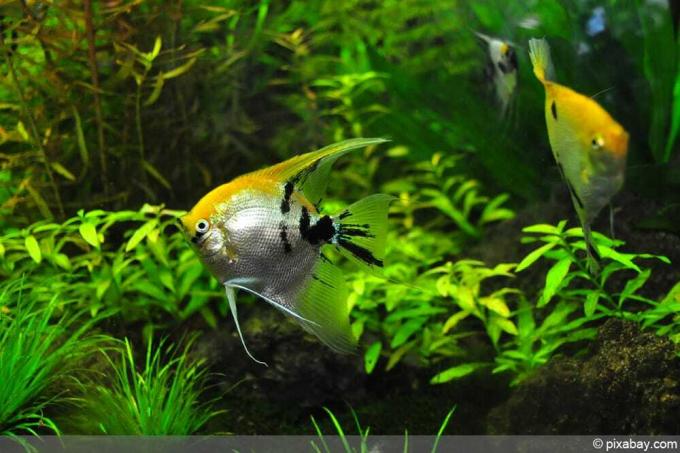
Table of contents
- General information
- Causes & Symptoms
- countermeasures
- water change
- change in lighting conditions
- Branch from the willow tree
- Natural predators
- algae killer
Filamentous algae are widespread in aquariums and can multiply en masse. If it comes to a sprawling growth, then these aquatic plants quickly become an unwanted nuisance. In the aquarium, thread algae often develop where too much light hits the water surface and when there are too many nutrients in the water. With the right countermeasures, however, further spread can be prevented in the long term.
General information
Algae are among the oldest aquatic plants on earth, so that over time different varieties have developed that are found in all bodies of water. It is therefore practically impossible to get the aquarium completely free of algae. To a certain extent, filamentous algae are useful and serve as a source of food for the inhabitants of the aquarium. Under optimal conditions, thread algae can multiply extremely rapidly in the aquarium and have a very disturbing visual effect. In addition, these aquatic plants form clumps that can lead to clogged filter systems. In addition, small fish and other microorganisms can get caught in these clumped spots and then die.
- Filamentous algae are undemanding and easy to care for
- Are colored bright green
- Form threads up to 20 cm long
- Are stretched out by the water current
- Often grow in the form of weedy cobwebs
- Form dense and area-covering carpets of fibrous material over time
- Also often appear as small, green cotton balls
- Some are short-filamented, up to 5 cm long, in tufts and fur-like
- Usually occur in clear water
- Prefer alkaline pH levels in the water
Causes & Symptoms

There are various causes for excessive growth of thread algae. These appear quite often in the initial period of use of an aquarium, since the water chemistry has not yet developed optimally. In addition, this type of algae has enough space to spread in the early days if no other aquatic plants have been settled yet. In addition, improper nitrate levels and nutrient imbalances accelerate the growth of invasive thread algae. The lighting conditions are also often the trigger for excessive algae growth. Filamentous algae often settle on decorative objects and prefer places with an even water flow, which is why they can often be found at the water filter outlet.
- Too few aquatic plants in the aquarium
- Too many nutrients in the water due to too much fish food
- Too little or too much carbon dioxide in the water
- Too low or too high nitrate levels
- Too few inhabitants, there is a lack of fish and invertebrates
- Too many inhabitants also lead to an imbalance in the aquarium
- Too strong lighting with too long lighting times
- Intense sunlight through windows on the aquarium
- Missing or faulty filter systems
- Too small aquarium with too little water volume
countermeasures
A quick and practical measure to remove thread algae is manual fishing. This should not be done with your hands, so as not to unnecessarily contaminate the water. It is better to have previously cleaned objects on which the thread algae get stuck and can be easily fished out. To avoid an imbalance in the nutrients in the aquarium, the fish living in it should not be overfed. A great help in combating the causes is determining the water quality. This value can be determined with a strip test or an electronic measuring device, both of which are available from specialist retailers. When the water in the pool has been tested, a water change is usually due.
- Fish out filamentous algae mechanically
- Wooden skewers or thin bottle brushes are helpful for winding up
- Scrub stones and decorative objects with a brush
- Also remove any remaining algae residue
- Include at least one food-free day per week
- Avoid too hard and alkaline water
- It is better to use collected rainwater instead of tap water
- Plant the aquarium properly
- Do not introduce slow-growing aquatic plants
- Use algae-eating fish and invertebrates as residents
- Compensate for high CO2 values by increasing the oxygen supply
- Water cleaned by an osmosis filter has a positive effect on the nitrate values
water change
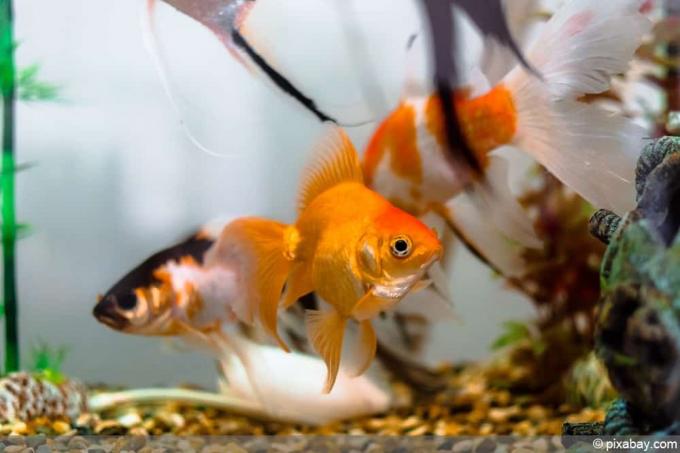
A regular water change is not only mandatory to destroy algae, but also important for the ecological balance in the aquarium. In this process, not all of the water should be replaced, but only a certain percentage of the old water stock should be replaced with fresh water. In this way, the natural water chemistry in the pool is maintained.
- Replace 30 percent of the old water once a week
- For extremely heavy infestations, change the water 2 to 3 times a week
- Ideally use water filtered by osmosis
- Tap water often has the wrong pH value
- Test pH before use
- Pre-treat water accordingly
change in lighting conditions
If too much light falls on the aquarium, both the water temperature and the chemical composition of the water will change. Therefore, it is important to ensure adequate shade, especially during the summer midday heat.
- Positions directly at the window are not ideal in the warm months
- In summer place the aquarium in a slightly darker place
- Use roller blinds or blinds to provide shade during the midday heat
- Do not set the lighting in the tank too much and leave it on for too long
Branch from the willow tree
Branches from willow trees are an effective and simple measure to combat thread algae. These release certain chemical substances into the water and in this way prevent the further spread of invasive aquatic plants.
- Acetylsalicylic acid in the branches stops algae growth
- Break off some branches from the willow tree
- Remove all leaves beforehand
- Place branches in several locations in the aquarium
Natural predators

Certain aquarium inhabitants that feed on the filamentous algae can be used as an animal countermeasure. These include, above all, the voracious snails. However, many aquarium owners have certain prejudices about snails and snails Afraid that these are not only the filamentous algae, but also the other and useful aquatic plants eat up. These fears are completely unjustified, since most snail species are not able to do this at all because their mouthparts are too soft. The snails listed below only eat rotten plant matter, soft thread algae and leftover food that was intended for the fish. In this way, the snails maintain a healthy balance in the tank.
- Ramshorn snails, tower snails, blue and golden apple snails are ideal
- Dwarf shrimp are also constantly busy destroying algae
- 30 pieces are suitable for a 300 liter pool
- Tetras, flag cichlids, Siamese algae mullets and plecos also eat algae
- Even densely overgrown areas are eaten bare again
- Aquarium becomes visually free of algae in a natural way
algae killer
When the algae infestation gets out of hand, many aquarium owners resort to chemical agents. However, these should only be used in an absolute emergency, as this would significantly disturb the ecological balance. The stronger the means and the faster they work, the greater the danger for the other aquatic plants and the inhabitants of the tank. For these reasons, biological means are to be preferred.
- Chemical agents kill thread algae quickly
- Water becomes clean, but there is an imbalance in the pool
- Biological agents on a natural basis are better
- Thread algae stop and AlguMin are effective
- Fermented grain is also biologically acceptable
- Algae killers based on fruit acids are questionable
- Citric acid destroys the cell structure of the algae and causes them to die off
- But after that, the acid becomes fertilizer and the phosphorus content increases
- The filamentous algae then grow more strongly than before
- Gills of some types of fish are damaged by fruit acid agents
 garden editorial
garden editorial I write about everything that interests me in my garden.
Learn more about algae in the pond
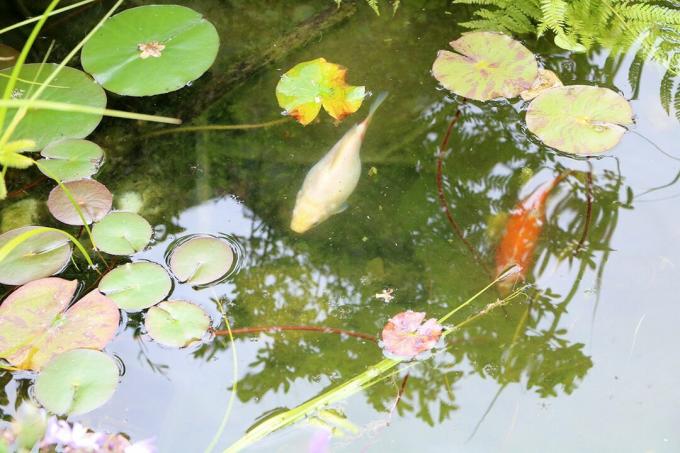
Floating algae in the pond: 10 tips for removing them
Algae infestation is not only unsightly to look at, but can also pose a threat to aquatic animals and plants. For this reason, it is advisable to always remove floating algae - read here how this works best!
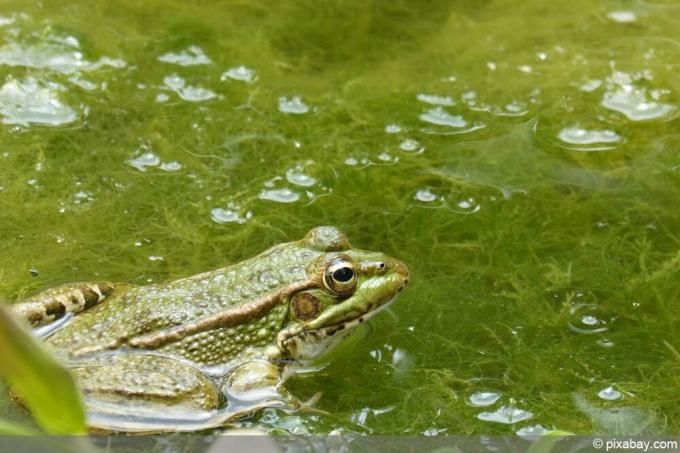
Algae eater in the pond: 5 hungry pond fish
Algae growth in the garden pond not only looks unsightly, but excessive growth can tip the entire ecosystem over. In this article we will tell you which types of fish, snails and mussels like to eat algae and what else helps against the "green plague".
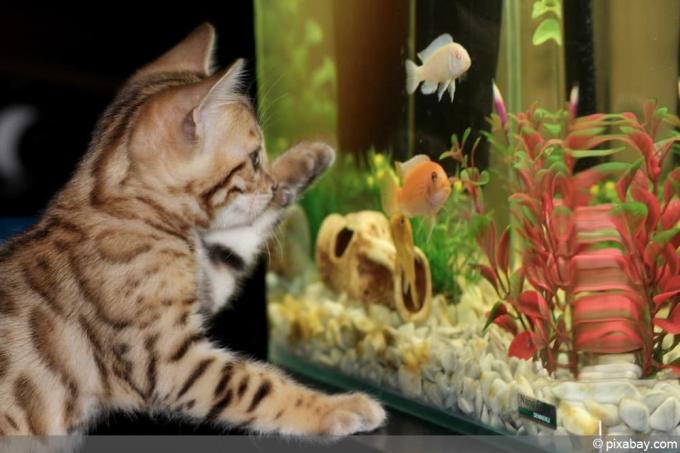
Get rid of green algae in the aquarium properly
Green algae occur in every aquarium. This is normal and part of it. It can even speak for a particularly good water quality. Only a massive increase in algae caused by too much light and too many nutrients is not normal. The green coloring and turbidity of the water means nothing other than that the biological balance has gotten out of joint. There are different green algae, also with quite different requirements. However, all benefit from an excess of food and can best be combated by depriving them of food.
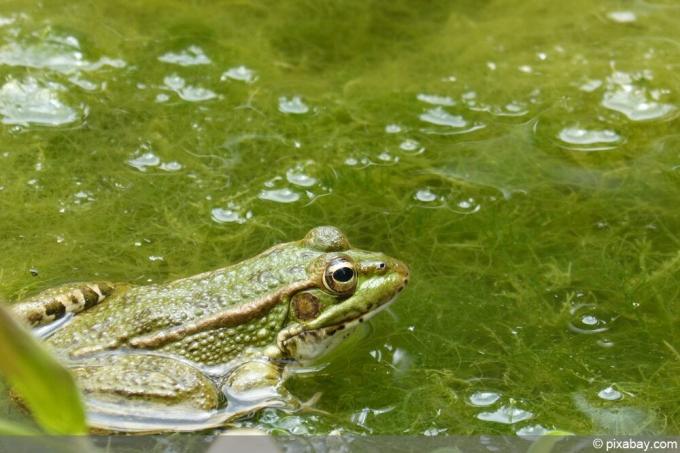
Natural remedies against thread algae
Algae in the garden pond are an absolute nuisance, but can hardly be avoided. Besides, they are useful too. They serve as food for microorganisms and also produce vital oxygen. It gets annoying when they multiply en masse.

The best home remedies for algae in the aquarium
Algae in the aquarium are absolutely natural and normally do not have to be fought. It only becomes difficult when they multiply explosively. There is a reason for this increase. It has to be found and turned off. That sounds simple, but it isn't.

Combat diatoms in the aquarium - in 5 steps
Diatoms occur mainly in newly set up freshwater and seawater aquariums, but can also appear during normal aquarium operation. This is mainly due to the initially high concentration of silicates.


